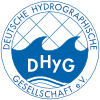Burial depth determination of cables using acoustics – Requirements, issues and strategies
Depth-of-burial (DOB) surveys are well-known in the oil and gas business to obtain the exact position and burial depth of pipelines or cables after dredging and for regular maintenance. With expanding offshore wind farming in the wake of the »Energiewende« site explorations, route and cable DOB surveys become increasingly important in this industry, too. Various geophysical methods like magnetic, electro-magnetic and acoustic sensors are used to detect and track buried cables. For best detection probability of buried cables to date mostly lines crossing the expected cable route are surveyed. Although this is suited to detect the cable and get its position with high accuracy, survey companies require more efficient technologies, accounting for both, operational and processing costs. Thus they are looking for easy to operate equipment that follows the cable along its actual route, works at different water depths, weather and seabed conditions and gives immediate and reliable results to produce deliverables with high accuracy of XYZ cable positions.
detection of buried objects | acoustic cable tracking | depth of burial – DOB | sub-bottom profiler – SBP


